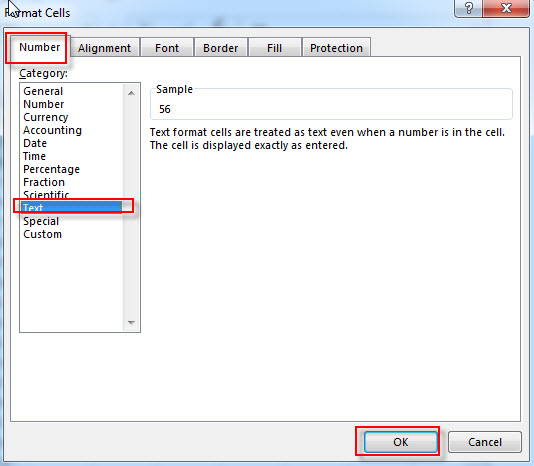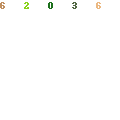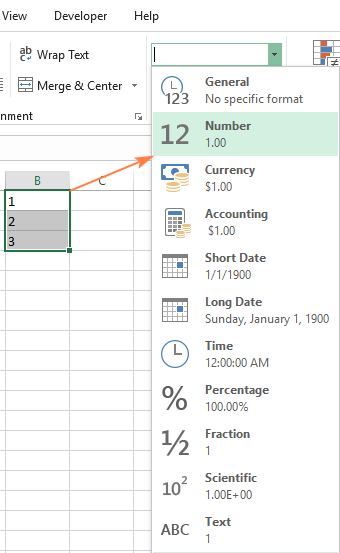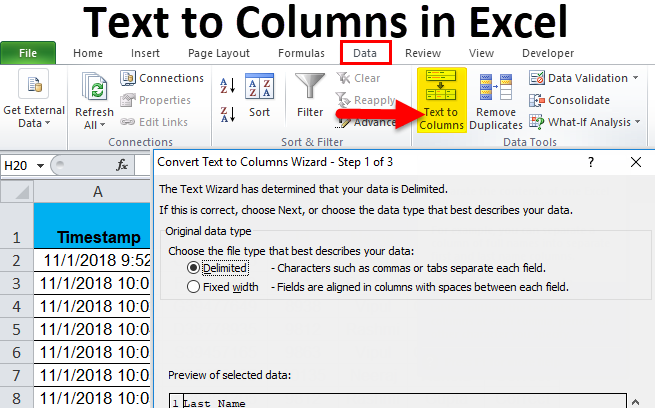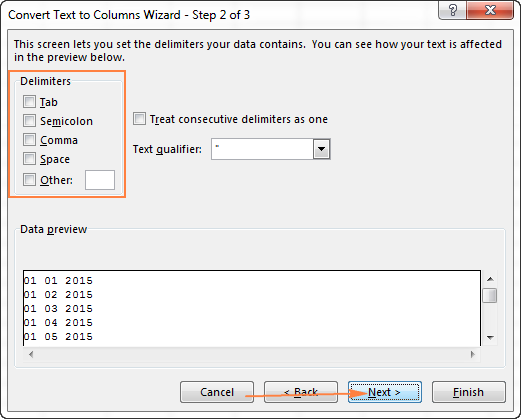While Microsoft Excel automatically reformats time values as hours and minutes, you can manually change the cell's time format to display the seconds as well. Certain formats might not contain enough information to convert text representations of dates and times. In those cases, hours, minutes, and seconds default to 0, days default to 1, months default to January, and years default to the current year. Datevec and datenum consider two-character years (e.g., '79') to fall within the 100-year range centered around the current year. It may be useful to convert the time in Excel from the standard hours and minutes format to seconds only. In order to do this, there are two main methods.
The best method is to sum the formulas HOUR, MINUTE, and SECOND to get the total seconds. To convert a valid Excel time into decimal hours, simply multiply by 24. By the TEXT function, which applies a custom number format for hours and minutes to a. The tutorial demonstrates different ways to convert time to decimal in Excel.
You will find a variety of formulas to change time to hours, minutes or seconds as well as convert text to time and vice versa. Microsoft Excel provides many useful functions for converting data. For times, it is crucial they be converted to the same units in order to perform calculations on them. For example, hours cannot be subtracted from minutes and a text representation of a time cannot be subtracted for a decimal representation of time.
In this tutorial, I will show you some examples of converting time to a decimal using formulas (i.e, converting time to hours, minutes, and seconds). As you see, the formulas with cell references and corresponding text strings deliver identical results. Also, please notice the left alignment of time strings in cells A2 and A6 and right-aligned converted time values in column D. Further on in this tutorial, you will find the detailed explanation of the first way and formula examples demonstrating the other technique.
The formula basically pulls the leftmost digit and uses them for the hours argument of the TIME function, and then uses the two rightmost digits for the minutes argument. TIME returns an actual time value, formatted as such in the cell. Dates and times in Excel are stored as serial numbers and converted to human readable values on the fly using number formats. When you enter a date in Excel, you can apply a number format to display that date as you like.
Bear in mind that, internally, Excel stores dates as whole numbers and times as proportions of a day. Excel's formatting can, of course, be used to display its internal values in an appropriate format. I know I'm asking a lot here but could you explain how to convert "Duration in seconds " to a readable format of years,months,weeks,days,seconds in Excel? I see all sorts of ways to convert date to date, etc but not "duration" of time in seconds! I need a way to convert it into a readable format of years, months, weeks, days, hours and seconds. I can do it in Perl, C and others but not in Excell.
When working in Excel with dates and times, there might be an instance where we need to calculate the difference between two times. For example, we may want to calculate how many hours, minutes and seconds have passed since our last birthday. In order to figure this out, little tweaks are needed. I am looking for an excel public function that will ignore all excel date and time functions or alternatively replace them with something marginally sane. Ive kept extensive data bases using ISO date and time strings and it works out fine. They can be sorted by date and time between events can be easily calculated by converting to Julian day counts .
Starting a calendar at 1900 shows what a bunch of hopeless airheads were running the show back when. When working with Excel, we might need to convert decimal time to minutes, hours or even seconds.This is just to make it easy to use the time in other calculations. Although you can convert seconds to minutes and seconds in Excel, it can be a bit tricky to convert and display times in combined units . Because time is calculated in Excel as a fraction of a day, you can convert fractions to appropriate time increments by combining calculations and custom number formatting.
To convert between two types of time units such as years to days, use the function CONVERT. Use "yr" for year, "day" for day, "hr" for hour, "mn" for minutes and "sec" for seconds. The LEFT function returns a given number of characters in a string, starting from the left.
So LEFT extracts the first 2 digits from the time in cell A2 . The macro uses an integer division to determine the number of hours and stuffs the remainder into iMins. This is then adjusted into a time value and placed back into the cell, which is then formatted as a time.
You can change the cell format, if desired, to any of the other time formats supported by Excel. One observation I make about Alansidman's solution is that it creates a text string result "dd days hh hours mm minutes". If this result will not be needed in any further calculations, then it probably doesn't matter that it ends up as a text string.
However, if further calculations are needed on this result, then it may be advantageous to not revert to a text string, but keep it in some kind of number format. In this tutorial, I introduce the methods to convert time to text string or number string, or the number of decimal hours, minutes and seconds in Excel. Convert time to text string Posted by ExtendOffice - Professional Office Add-ins.
The easiest way to convert time to decimal in Excel is to times the original value by the number of hours, seconds or minutes in a day. Delete the formatting in the Custom date and time formats box, and then click on the drop-down box to the right of the custom format box to display all the date and time options. You then use custom formatting to display the days as well as the hours, minutes and seconds. You can insert or type the degree symbol in Excel using built-in commands, keyboard shortcuts or a custom number format.
A custom number format can be applied to cells and would apply the degree symbol as a format rather than inserting it. The degree symbol can be entered in cells, equation blocks or text boxes. It is automatically entered in superscript. The term degree is used in several temperature scales including Celsius and Fahrenheit. How can I convert time entered as text to hours and minutes in Excel? Formulas are the key to getting things done in Excel.
You'll also learn how to troubleshoot, trace errors, and fix problems. If you want to learn a few more helpful formulas to add and subtract times, calculate elapsed time and time difference, please check out other parts of our Excel Times tutorial . I thank you for reading and hope to see you again next week.
How To Convert Text To Hours And Minutes In Excel If any of the above formulas returns a value formatted as time, simply change the cell's format to Generalto display it as a number. Tip.If you want to convert a time to decimal hours, minutes or seconds, please try to use the Kutools for Excel's Convert Time as shown in the following screenshot. It's full function without limitation in 30 days, please download and have a free trial now. The above two formulas take the time which is in cell A2 and break it down into its constituent parts –hours, minutes, and seconds. They then use the text string in the second parameter ("HHMM" or"HHMMSS") to format the parts of the time.
The RIGHT function returns a given number of characters in a string, starting from the right. So RIGHT extracts the last 2 digits from the time in cell A2 . Similarly, the RIGHT function returns a given number of characters in a string, starting from the right. If you have a worksheet where time is shown in military time format, you might not be able to find a direct function in Excel that can convert it to standard time.
I am attempting to figure out how to change the formula to automatically subtract a 30 minute lunch if the total time for the day exceeds 6 hours worked. Dates and times, specified as an array of datetime or durationvalues. The datenum function does not account for time zone information in t and does not adjust datetime values that occur during Daylight Saving Time. That is, datenum treats the TimeZone property of datetime arrays as empty and converts the remaining date and time information to a serial date number. The result is the year, month, day, hour, minute, and second value for each of the date-time values in the selected column. Once the formula is copied to the other cells, it automatically extracts the values from the entire list of the date-time values.
The TIMEVALUE function is used to convert a text value into a time value. Row 7 has the default Time format applied from the Number format list in the ribbon toolbar. This gives us the time value expressed in hours, minutes and seconds. My Italian bank doesn't support direct integrations with third-party accounting services, and my particular requirements often include converting expenses from ... Different types of formatted cells within minutes.
Thankfully Excel has some awesome formulas, you can easily convert time to decimal values. You can combine calculations and custom number formatting to display minutes and seconds in Excel. There are other functions and calculations you can use to calculate time but the strategies we've used here are useful for many scenarios. Working with time can be tricky and if start times and end times are not entered correctly, you won't be able to calculate time differences.
Is there a potential solution for correcting the formatting. When Pasting time values from different systems they will show the minuets as hours and others will be correct. This is causing issues with my data tables. If your time formulas and calculations do not work right, time values formatted as text is often the cause. The fastest way to convert text to time in Excel is using the TIMEVALUE function.
If you are having a problem with a specific time format that isn't on this list, please let us know through the comments so we can solve it for you, and add it to this list. You could also read our lesson on converting text into dates, which has some additional troubleshooting tricks you could try. Another reason your TIMEVALUE formula might return a #VALUE error is that Excel is already storing the value as a time value. Try applying a different time format to the cell to see if this is the case. It is very important to note that applying a time format to a number does not change the number itself. This matters if you decide to perform any calculations using the time values.
The short form of military time displays the time with just 4 digits – the hours and the minutes. All rows of a character array, or all elements of a cell vector or string vector, must have the same format. Here we are going to convert minutes in decimal format to a proper Excel time. In the sheet, the time format column should change according to the entered type format.
Click OK, now text strings are converted to time. If you need to repeat you can also record the macro as you perform the text to columns split/addition of hours/mins to automate it. Sometimes nested and complex formulas get too confusing and long. Just split on the spaces, slap a filter on the second column of the output to ID those that are just minutes with no hours, and slide those over to the minutes column. Then use a simple formula to add the minutes and hours. You can achieve the same result using the inbuilt Excel CONVERT function.
Make sure your time/decimal cells are formatted the same as listed above. The resulting amount includes a decimal value for minutes, but this is a fraction of an hour, as opposed to a fraction of a day as was shown in Figure 1. Just like we used these functions to get the hour value, you can also use these to convert time to minutes. You then use custom formatting to display the hours as well as the minutes and seconds.
Once you have done this, you will get the time value as a number. In order to display the time value as a valid time ie in minutes and seconds, you need to format the cell with custom formatting. This tutorial will demonstrate how to convert seconds to time in days, minutes and hours in Excel and Google Sheets. There are several time formats in this dialog box. Codes include h for hour, m for minute and s for seconds. Select the cells, columns or rows to which you want to apply a custom number format.
Our report sends the information over in text format. When copying it into Excel, I am unable to convert it to hours and minutes without manually changing the format to each cell one by one. Hi - I'm Dave Bruns, and I run Exceljet with my wife, Lisa.
Our goal is to help you work faster in Excel. We create short videos, and clear examples of formulas, functions, pivot tables, conditional formatting, and charts.Read more. This is how you split date and time in Excel.
If the separated date and time values are not displayed properly, change the format of the new columns to Date and Time, respectively. This post is the first in a series on solutions to the data cleansing challenge I presented in a previous post. The challenge is to use any tools in Excel to convert the time/duration stored a text into a numeric value that can be formatted as a time.
I would like to easily convert this to a time format so I can find minimum, maximum and average time values. I have over 5000 data entries so I would prefer not to do this all manually. Drag the corner on your formatted duration cell down the column for any other rows you want to also apply the formula.



